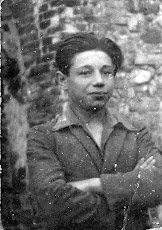Following Shabtai Zvi
Sabbatai Sevi
Exhibition – Nechama Levendel & Nadav Bloch
In October 2007, while on an artistic journey through the Balkans, the artists Nechama Levendel and Nadav Bloch were invited to exhibit their work in the municipal gallery of Ulcinj in Montenegro, on the border with Albania.
The gallery was located in a three-story stone building in the center of an archeological site in the old town of Ulcinj. On a preparatory visit to the gallery, the artists climbed to the third floor, where, to their amazement, they discovered a niche in one of the walls over which two Stars of David (Magen David) and on the facing wall two trees were engraved in the stone. The reply to their questions as to the origin of these symbols was that the building had served as the study house of the Messiah Shabtai Zvi and his followers.
Nechama and Nadav, as Jews and as artists, were intrigued by the subject and delved into the saga of the Messiah Shabtai Zvi, which had caused such a shock to the exiled and hunted 17th century Jewish communities. In the second half of the 17th century the Turkish Sultan banished Shabtai Zvi to the farthest corner of the Turkish Empire – the town of Ulcinj, then in Albania. Various sources tell that on Yom Kippur Shabtai Zvi went outside, recited "Shema Israel" and the mosque across the street collapsed, as Shabtai Zvi died. The remains of the mosque can still be seen across the street from the gallery. Shabtai Zvi died in Ulcinj and was buried there, presumably under a false name. The grave is in a closed building and is considered holy.
In May 2008 the artists returned to the town of Ulcinj, and used the gallery as a studio in which they spent two months working on this project. The work process became part of the exhibition entitled "Following Shabtai Zvi", which was shown in Ulcinj, Montenegro, at the Shkodra University in Albania and at the National Gallery in Tirana, Albania.
Nadav Bloch chose to paint on jute (burlap) sacks that were used for coffee, on the premise that trade routes were conduits of culture, through stories and tales told by the merchants about lifestyles, tradition and religion. Kabalistic literature inspired the creation process. Soft colors serve as a background to the design of spheres, upon which appear combinations of numbers and letters taken from Kabala mysticism. In his work, Nadav attempts to examine and interpret the secrets of Messianic faith created by Judaism as a longing for redemption and as a quest for insight and meaning in our spiritual and material lives.
Nechama Levendel shows objects created from books. She received the books from local residents, to which she added motifs concerned with the Shabtai Zvi theme and other local materials: gauze bandages, candle-wax from churches, shoe-polish and so on. The book, which is present in most cultures, sends a material and a spiritual message. In the work process, the book loses its original designation and becomes the bearer of a new visual message, beyond language, comprehensible to every spectator. The book holds a secret. The works are symbolic. Every book tells its unique story.
Opening: January 3rd, 2009 at 18:00
Closing: January 23rd, 2009 at 12:00
Tova Osman Art Gallery
100 Ben-Yehuda St., Tel-Aviv
Sabbatai Sevi
shabbetai zevi






אין תגובות:
הוסף רשומת תגובה